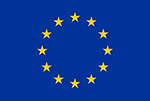
Implementing Maritime workflows using RapidMiner Studio
18 Dec 2020 -
This tutorial showcases how we can easily create scalable workflows for the maritime domain consisting of multiple INFORE components using the RapidMiner Studio and its Streaming Extension, that has been recently released under an open source license. This extension provides operators that allow RapidMiner users to design and deploy arbitrary streaming jobs.
Input. For the tutorial, a public AIS dataset provided by MarineTraffic is used. The dataset contains information about vessels (e.g., navigational status, location, speed, etc.).
Synopsis Data Engine (SDE). The Synopsis Data Engine of INFORE is built on top of Apache Flink and exploits parallel processing and data summarisation techniques for performing scalable interactive analytics. In this workflow, we use it in order to create synopses of AIS data, creating simplified trajectories in order to improve the execution time of the workflow. The SDE is publicly available as an open source project and you can read more about its internal architecture and implemented algorithms SDE in the respective CIKM paper.
Maritime Event Detector. The Maritime Event Detector is an engine implemented by MarineTraffic, that is able to detect maritime events, such as deviations from normalcy (e.g., a vessel switching off its transponder) and vessel activities (e.g., transhipments, fishing, bunkering). The detection of fishing events (e.g., carried out by trawlers and longliners) supported by this module is documented in the respective DEBS paper.
Complex Event Forecasting (Wayeb). An open source version of the CEF has been released recently here. It is based on symbolic automata and Markov models and in this workflow it is used to forecast maritime events (e.g., “a vessel is about to enter a port”).
In this workflow, we consume AIS events in a streaming fashion from a Kafka topic, and we create synopses using the SDE component. The simplified trajectories that are derived from this component are then forwarded to either the Maritime Event Detector, to detect events that occurred, or to the Complex Event Forecasting module, to forecast events that are about to happen. Using the RapidMiner studio with the streaming extension enabled, we are able to drag and drop the aforementioned modules in our workflow and connect them without the need to write any code. The video tutorial provided below demonstrates how this magic happens.
The demo is presented by Fabian Temme (RapidMiner).
